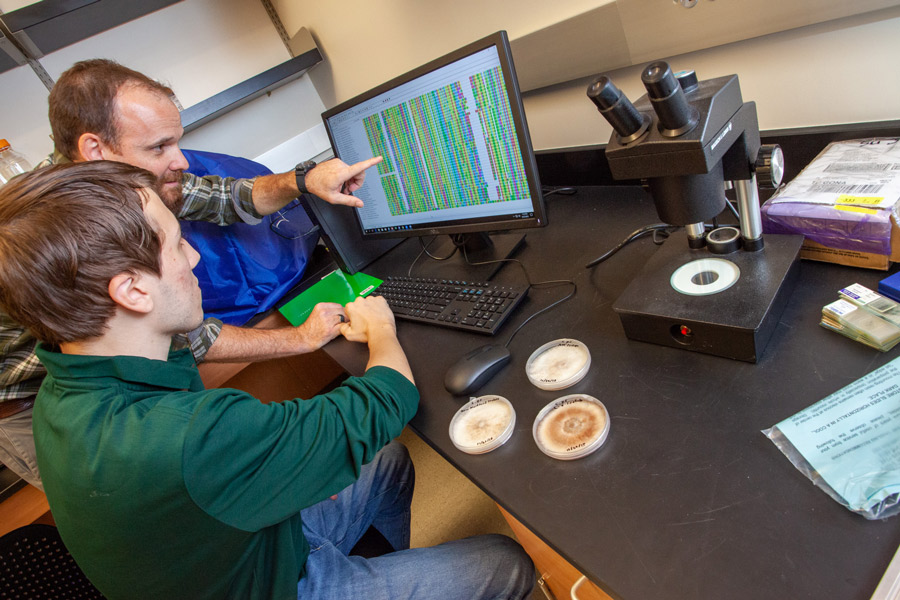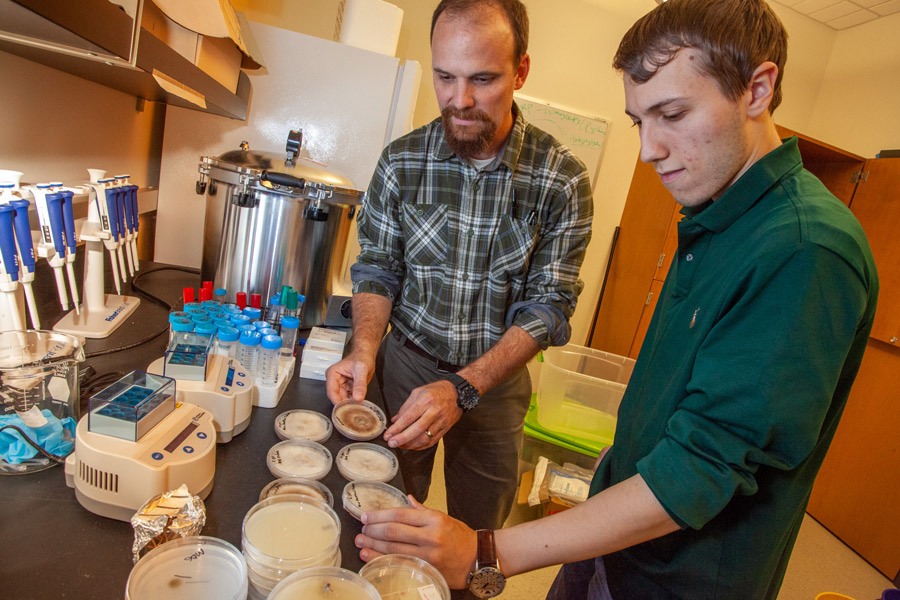- Apply
- Visit
- Request Info
- Give
Biology Research Duo Publishes on Antifungal Resistance
Written by Molly Boucher
Published on December 12, 2019
New research into antifungal resistance, conducted by Eastern Connecticut State University student Stefanos Stravoravdis '20 of Colchester and mentored by Biology Professor Jonathan Hulvey, was recently published in the international science journal "Mycobiology."
Titled "Widespread occurrence of a CYP51A pseudogene in Calonectria pseudonaviculata," the article discusses an invasive fungal pathogen that causes boxwood blight and threatens nursery growers in the Connecticut and abroad. Stravoravdis is a biology and mathematics double major.
The paper shows that a unique gene involved in antifungal tolerance is widespread in the fungus that causes boxwood blight, Calonectria pseudonaviculata. Stravoravdis says his findings may have "implications for the evolution of resistance to azole fungicides in this invasive pathogen."
Hulvey has been researching antifungal resistance mechanisms since 2010 in economically important plant pathogens and emphasized the importance of Stravordvids' work to his growing research program. "Our lab works with microbes that cause plant disease and is focused on uncovering the molecular mechanisms of antifungal resistance. This has connections to medicine, as well, as emerging diseases that are becoming resistant to the major classes of antifungal drugs, such as the azoles. These chemicals are used to treat diseases of agricultural crops, humans and animals."
Stravoravdis and Hulvey, as well as colleagues at the U.S. Department of Agriculture and the Connecticut Agricultural Experiment Station, applied genomics tools to analyze fungal isolates from the United States, Europe, Asia and New Zealand. For now, they report that the pathogen has a genetic signature indicating that resistance has not evolved yet.
"Our findings suggest that one possible mechanism, called 'paralog re-emergence,' in which gene mutations can lead to azole resistance, may play a future role," says Hulvey. "Our study presents a unique finding and provides a starting point for future studies."
"Mycobiology" is an online, open-access journal. Follow this link to view the article: https://www.tandfonline.com/doi/full/10.1080/12298093.2019.1689600




